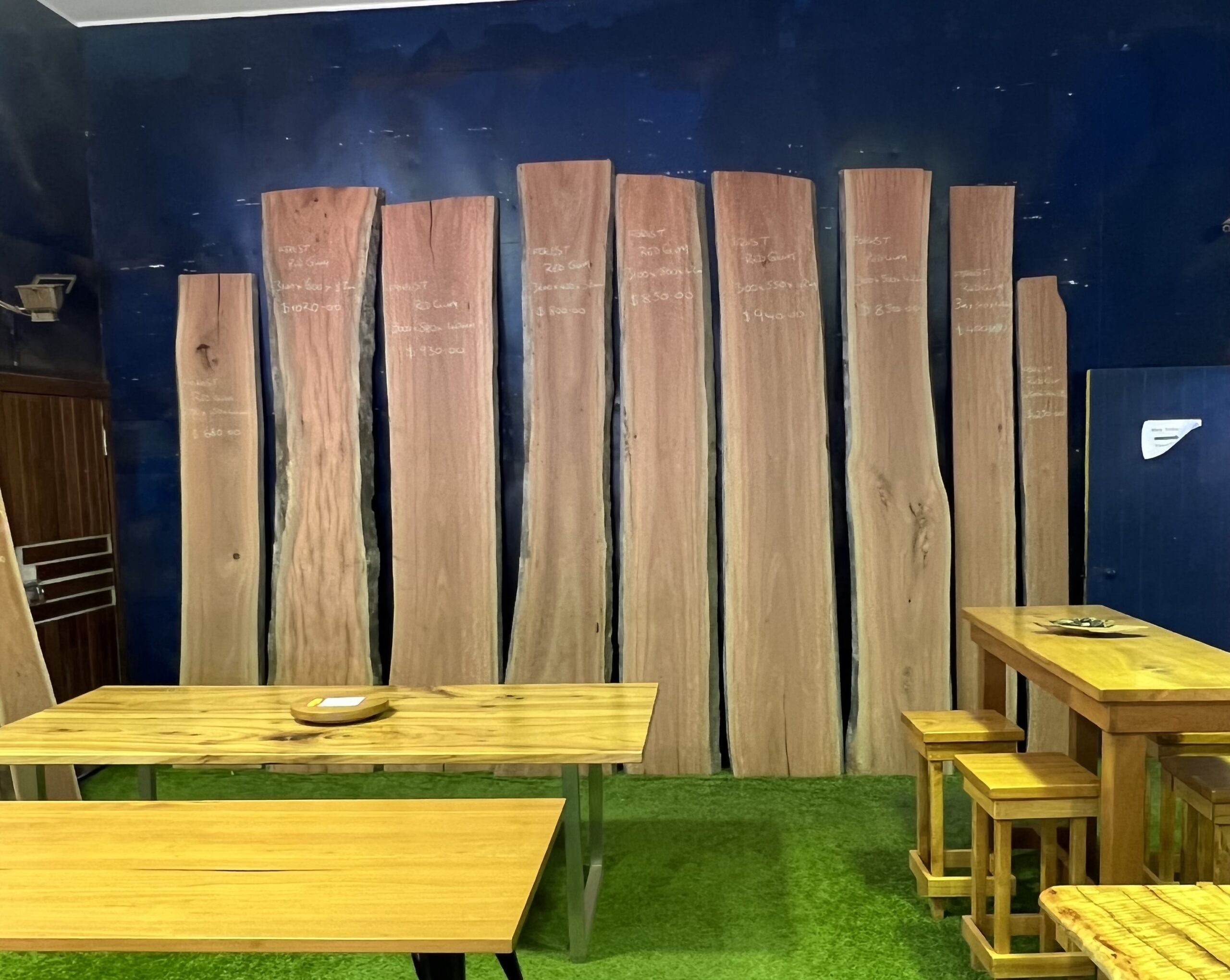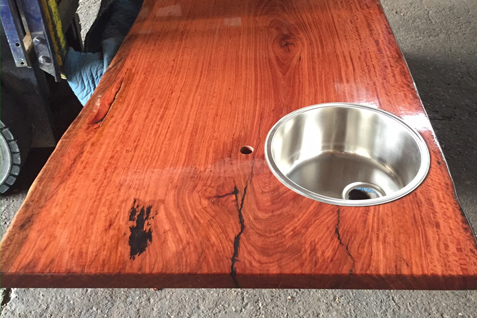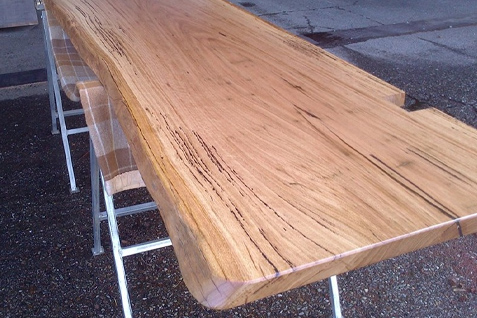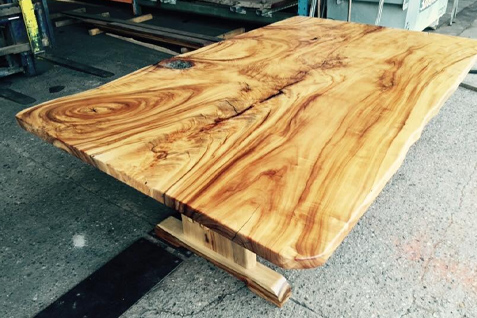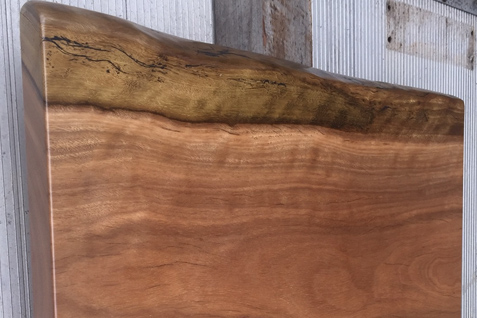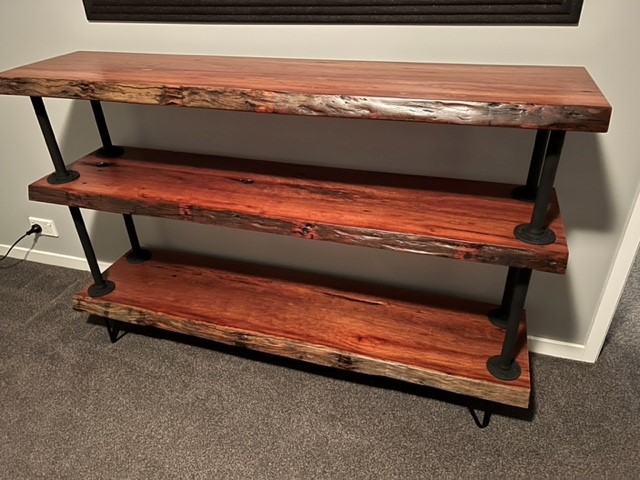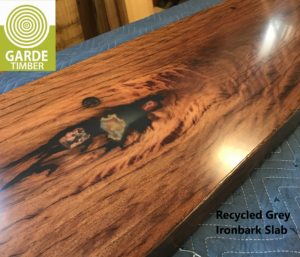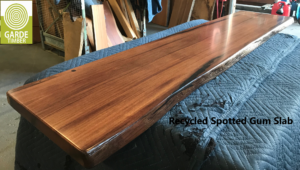Show the work of nature in your DIY Project
Garde Timber’s range of natural edge timber slabs are cut by portable mobile sawmills from salvaged logs obtained from rural and urban land clearing, tree loppers, storm recovery or trees deemed too dangerous in parks and recreational areas.
Timber slabs will generally contain natural feature in hum vein, insect holes, cracks, splits and other rustic qualities of which can be filled if required. Slabs generally come with a natural edge down both long sides. Natural edges can be left for a rustic appeal or cut off for a square edge contemporary modern feel, still leaving a large width amazing grain pattern showing the work of nature.
Levelling and Sanding service by Slabmaster Levelling Machine – giving 2 flat parallel sanded faces. Sanding is done on our Biesse Italian Wide belt 1350 mm sander. Shaping Natural Edge can be done to smooth to touch profile and filling with epoxy fillers for food safe surfaces eg Hotel / Café / Kitchen Bar tops. Cutting off the natural edges to give square edge or Routing the cut edge to a pencil round profile usually 3 mm or 5 mm radius(other profile available on request.)Polisahing service also available in 2 Pack Polyurethane.
